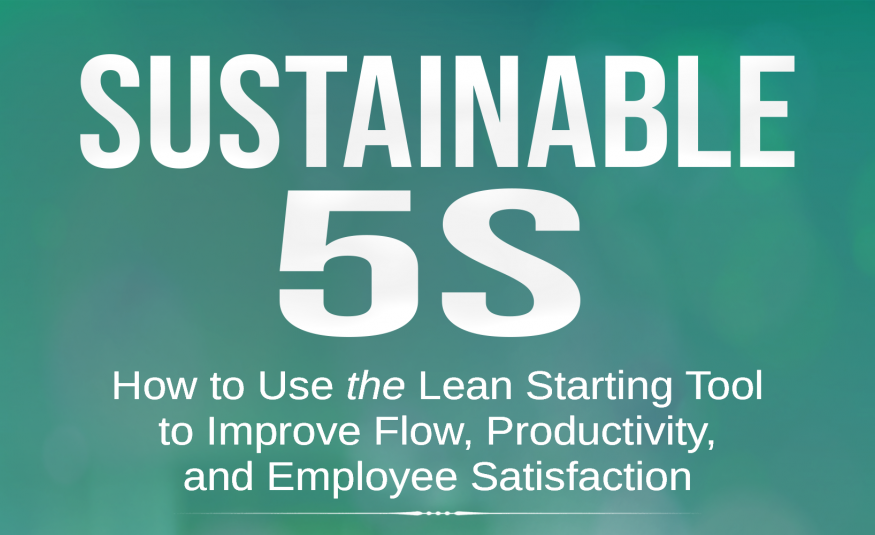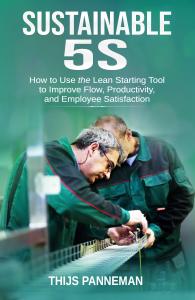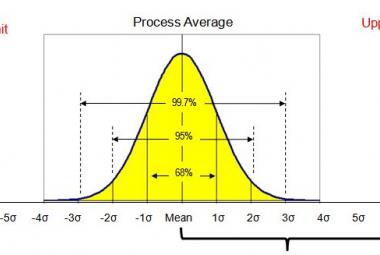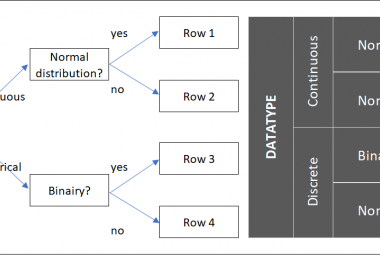Sustainable 5S, a short book by Thijs Panneman, describes how you can use the widely used lean tool 5S to increase flow, productivity, and increase employee satisfaction. 5S is one of the most well-known tools in the lean production toolkit, but in more than 90% of the organizations in which the tool is used, it has not achieved the benefits that it could achieve. This book describes the causes of this missed opportunity on the basis of the author's own experience, and many tips to use 5S in a meaningful way from the start.
Part one describes an INTRODUCTION IN 5S and in which 5S is introduced, the link is made with the seven wastes (muda), and various tools are described that are part of the 5S toolkit.
5S is a tool for workplace organization, with 5 phases that each start with the letter “S”: Sort, Straighten, Shine, Standardise and Sustain. These 5 phases are also implemented in this specific order. For an introduction to the 5 stages of 5S, click <<here>>.
The goal of 5S is to increase productivity, and then primarily by reducing non-value adding activities (the wastes). The better your workplace is organized, the fewer search, transport and waiting times will arise at a workplace.
Within the 5S phases there are different tools available to support 5S thinking and acting: for example, the red-tag zone and tool for the 1st phase (sorting), shadow boards are a tool for the 2nd phase (Sorting), and doing a mini-audit a tool for the 5th phase (sustaining).
Part two of the book describes THE MOST COMMON PROBLEMS IN 5S IMPLEMENTATIONS.
The most common problem is that the installed 5S standards are not retained in the long term. The discipline of keeping the 5S standards op to date tend to sinks slowly over time, so that wastes that were previously eliminated occur again. One of the solutions for this lies in the correct use of the 5S audit and the corresponding improvement course of 5S standards.
A second reason that 5S is often only a temporary phenomenon is that it is seen as an isolated project or program, without being embedded in the daily way of working. To improve this, you need to link 5S to, for example, to Leader Standard Work and the Daily Management System.
Then there is the (in my opinion most important) problem that 5S does not lead to productivity gains. When you put so much time and energy into a program, wouldn’t it be smart to ensure that the investment pays off? Doing so-called waste walks and lead-time analyses are important here.
Part three of the book describes how you can use 5S even smarter TO GET MEASURABLE RESULTS.
The first tip is to first enter 5S in the slowest process step in the process (the bottleneck). When you increase productivity using 5S, not only does that team notice it, but also all teams in the process, because the slowest step in the process determines the pace of the entire line. Panneman describes the use of Value Stream Maps and Process maps to find the bottleneck.
The second tip in part 3 of the book is to do a structured waste analysis to improve the team's biggest losses in the first round of standardization (the 4th phase of 5S) from the process.
A third tip describes that the focus should not only be on how clean a machine is and what the workplace looks like, but also on how products flow through the department. For example, you can use 5S to visualize the size of intermediate stocks, but also how long products have been waiting within those stocks.
Finally, part four describes what RESULTS you can expect after following the above tips.
Because less time is wasted searching for material, employees will experience less stress and employee satisfaction will increase. A precondition for this is that employees exert influence on their own 5S standards and receive support from the organization to continue to develop these standards.
Because problems become visible at an early stage, managers can waste less time firefighting and will be able to spend more time to structurally improve processes and develop their team members. A major step in the context of lean management, where the argument is often mentioned that we are too busy to take the time to improve.
Finally, if you use your tool in a smart way, a good 5S implementation leads to measurable improvements in quality and delivery reliability that your customers can also experience. This means that this simple tool can have a major impact on your organization.
Sustainable 5S is a must-read for anyone who is working on 5S or wants to get started. With the help of this book you exceed 90% of the organizations and you ensure that your organization becomes a benchmark organization and that your 5S initiative becomes a sustainable success!
Continue to:
Lean Transformations - T.Panneman (summary)
REFERENCE:
Panneman, T., 2019, Sustainable 5S - How to Use the lean Starting Tool Tool to Improve Flow, Productivity and Employee Satisfaction, Dublin: MudaMasters (order this book)












